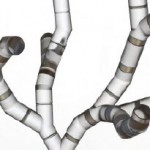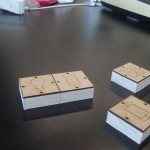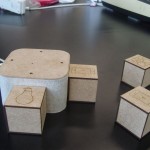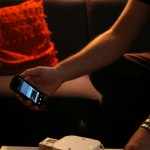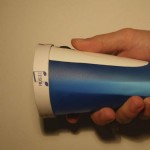
Erik Kogler, one of our bachelor students, designed a handheld projector based user interface for environments that are full of smart objects. “Spotlight Navigation at the TU/e can thus be said to arise from SOFIA’s need for interactive controllers for the ubiquitous, invisible technological networks that will surround the user (in this case in the home). When dealing with pervasive technology it is normally assumed that all manner of products will be able to share and collect information, even though they lack an interface capable of creating the connections to make this useful. … Spotlight Navigation device seems an ideal solution to this lack of interface as it can use any surface to create a vast and entirely flexible user-interface.”
